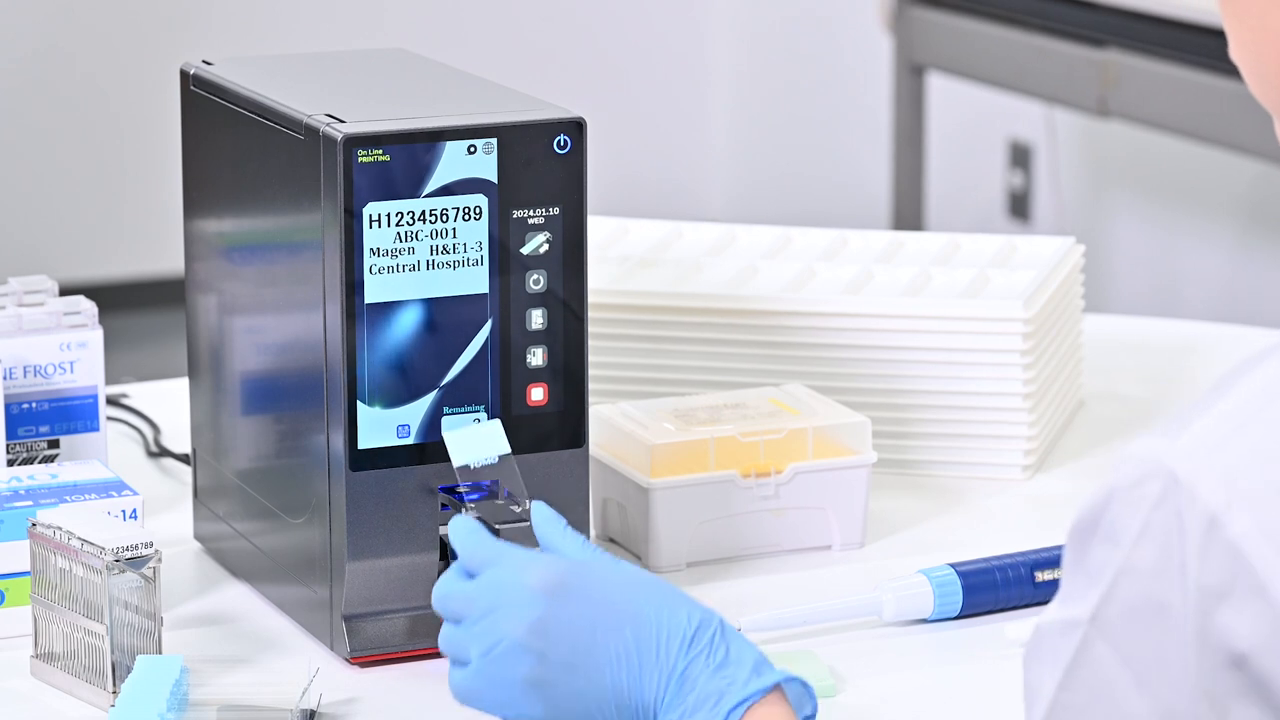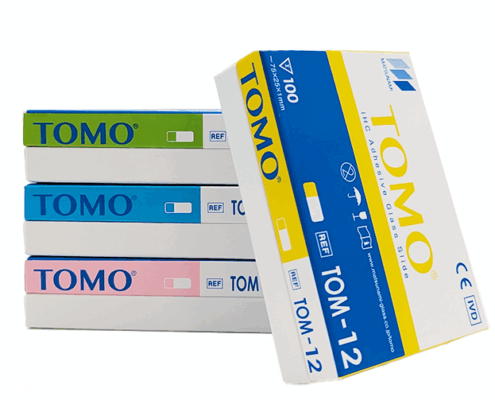Microscope slide printers are specialist pieces of equipment designed to print labels directly onto microscope slides, eliminating the time-consuming process of manual handwritten labels. This automated process minimises errors while improving workflow and traceability. There are several types of direct-to-slide printers, each featuring a unique print technology: Thermal, Laser and Inkjet. Which printer to choose depends on each lab’s unique requirements such as throughput, print durability and unit size.
The ‘Go To’ Printer
In laboratory settings, thermal transfer printers are the most widely used for microscope slide labelling. Their durable and solvent-resistant print, high-resolution text and barcodes and fast throughput make them the standout option. Minimal maintenance and straightforward consumable replacement also tick the box for budget and user-friendliness.
How Do Thermal Transfer Printers Work?

Ribbon and Slide Setup
A ribbon with ink is placed between the printer head and the slide

Heating
Tiny heating elements in the print head heat up in the pattern of the text, barcode or image

Ink Transfer
Heat melts the ink from the ribbon and transfers it onto the slide label area

Cooling and Fixing
The ink cools and sticks permanently to the slide

Slide Ejection
The labelled slide comes out ready for use
A Compact Solution: The ESPO II
The Matsunami Glass ESPO II microscope slide printer is transforming laboratory workflows by enabling fast, on-demand slide printing with unmatched accuracy. Designed for modern pathology environments, it delivers a perfect blend of efficiency, precision, and reliability, helping laboratories streamline operations and reduce human error.
With its compact design, dual touchscreen controls, and solvent-resistant printing technology, the ESPO II fits effortlessly into even the busiest lab settings — whether used alongside a microtome or as part of a high-throughput slide preparation station.
Key Features and Benefits
-
Efficient: Equipped with two 100-slide magazines and capable of printing up to 20 slides per minute, the ESPO II keeps up with the pace of busy histopathology workflows — ensuring faster turnaround times and less downtime.
-
Intuitive: Its dual touchscreen interface offers easy-to-follow controls and user guidance, reducing training time and helping staff focus on what matters most — delivering high-quality results.
-
Compact: Weighing only 4.5 kg with a small footprint, it’s ideal for use in space-conscious pathology labs where bench space is at a premium.
-
Resistant: The solvent-resistant ink ribbons ensure durable, clear, and legible prints that withstand harsh reagents such as xylene and alcohol — crucial for maintaining sample traceability throughout processing.
-
Connected: With integrated barcode scanning and *Laboratory Information System



